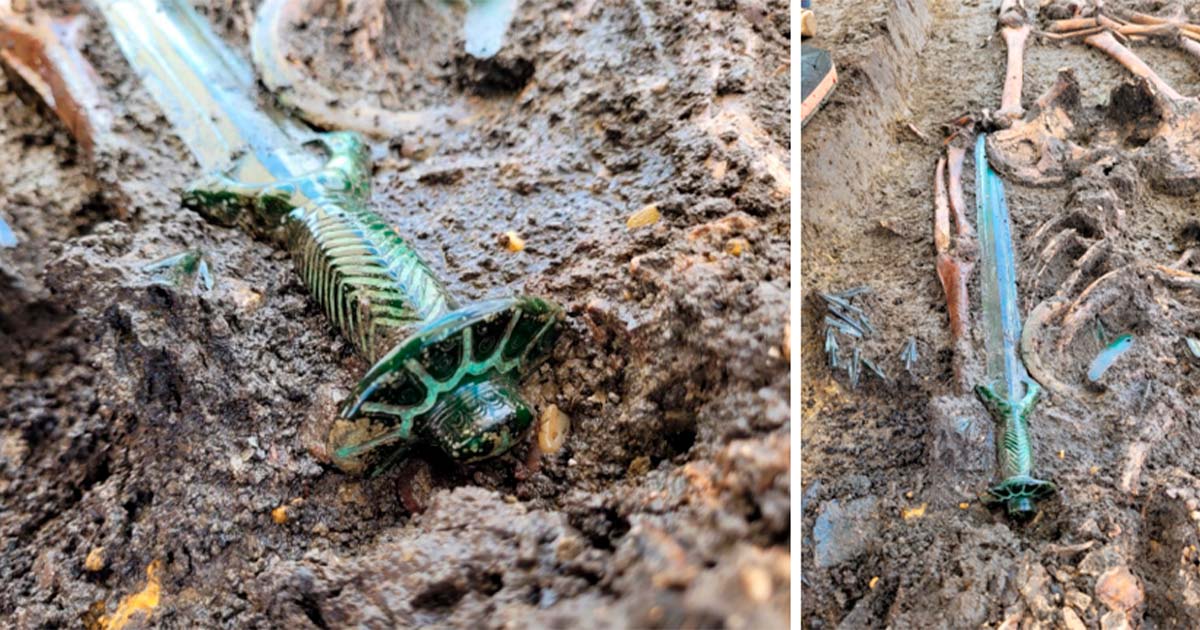
Officials say that a bronze sword made more than 3,000 years ago that is so well-preserved it “almost still shines” has been unearthed in Germany. It is the latest in several remarkable discoveries shedding light on a critical period in European history. The weapon, which has a bronze octagonal hilt, was found in a grave that contained the remains of a man, woman, and boy in southern Germany. It is unclear whether the three were related to each other, the Bavarian Office for the Preservation of historical monuments said this week in a statement.
It has a greenish color resulting from bronze and copper, which oxidized over time. The sword’s hilt is cast over the blade in an overlay technique that requires skilled smiths. Only a few European hotspots were known to manufacture these kinds of octagonal swords. Archaeologists suspect that this one was crafted in southern Germany. However, the researchers are still determining whether the blade was locally forged or imported.
Researchers do not think the sword was used in combat, as it shows no sign of wear. It could, however, have been used for ceremonial purposes, as the hilt and pommel plate are oval, suggesting a more decorative design. Its center of gravity is positioned at the front end, suggesting that it would have effectively slashed opponents.
The discovery sheds new light on the Urnfield culture, which developed from the preceding Tumulus Culture around 1300 BC. Despite being divided into many local cultures, the Urnfield people developed advanced metalworking skills that gave rise to Bronze weapons and armor.
This sword and the grave where it was found are rare in this area of Germany, as most burial mounds were either looted or opened in the 19th century. The grave, in Nordlingen, belonged to a member of the Urnfield culture, who was cremated.
The grave also contains a woman, a boy, and other bronze objects. The location is significant because it was typical for warriors of the Bronze Age to toss their swords into a body of water to commemorate their fallen comrades or to mark the end of a battle, according to the Field Museum in Chicago. The discovery is a significant milestone in studying this vital era when metalworking technology allowed humans to advance their societies and build larger cities.
During this era, humans began to work with bronze, a copper-based alloy, to create tools, weapons, and other essential items. This led to a burgeoning of trade and the expansion of Western civilizations. The metallurgy advances of this era are credited with increasing the size of cities, improving agriculture, and boosting trade. Historians have said that the find also highlights the importance of preserving such artifacts for future generations. The Field Museum has held the sword since it was pulled from the Danube River in Budapest in the 1930s.


